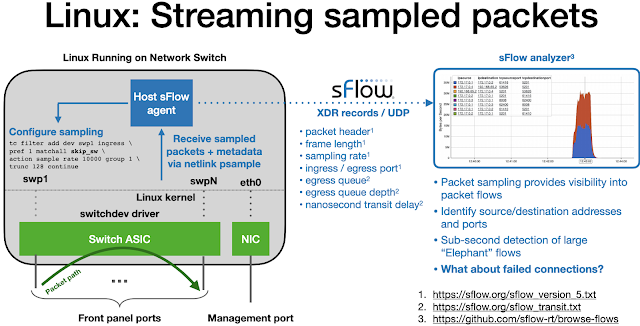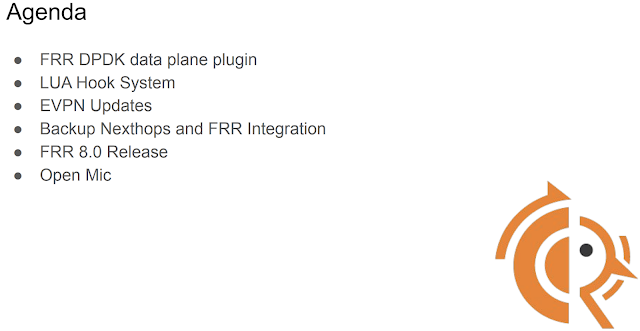Automating NSX-T Firewall Configuration
Noël Boulene decided to automate provisioning of NSX-T distributed firewall rules as part of his Building Network Automation Solutions hands-on work.
What makes his solution even more interesting is the choice of automation tool: instead of using the universal automation hammer (aka Ansible) he used Terraform, a much better choice if you want to automate service provisioning, and you happen to be using vendors that invested time into writing Terraform provisioners.
Automating NSX-T Firewall Configuration
Noël Boulene decided to automate provisioning of NSX-T distributed firewall rules as part of his Building Network Automation Solutions hands-on work.
What makes his solution even more interesting is the choice of automation tool: instead of using the universal automation hammer (aka Ansible) he used Terraform, a much better choice if you want to automate service provisioning, and you happen to be using vendors that invested time into writing Terraform provisioners.
Can Your Organization Benefit from Edge Data Centers?
In an era defined by a growing need for super-fast processing and maximum flexibility, small and nimble edge data centers are gaining traction.ShortestPathFirst Adds InfoBlox to Product Portfolio
ShortestPathFirst adds Infoblox to it’s product porfolio. This solution will assist our customers in automating, modernizing, and simplifying DDI and DNS security in their networking environment.Hedge 098: DRIP with Stuart Card

Drones are becoming—and in many cases have already become—an everyday part of our lives. Drones are used in warfare, delivery services, photography, and recreation. One of the problems facing the world of drones, however, is the strong tie-in between the controller and the drone; this proprietary link limits innovation and reduces the information available to public officials to manage traffic, and even to protect the privacy of drone operators. The DRIP working group is building protocols designed to standardize the drone-to-controller interface, advancing the state of the art in drones and opening up the field for innovation. Stuart Card joins Alvaro Retana and Russ White to discuss DRIP.
Day Two Cloud 113: Multi-Cloud Network Visibility And Automation With Aviatrix (Sponsored)
Today's Day Two Cloud episode dives into multi-cloud networking with sponsor Aviatrix. Aviatrix offers a cloud network platform with a common data plane and operational model that works across public clouds and supports visibility and automation. We dig into the product with Aviatrix guests and a customer.
The post Day Two Cloud 113: Multi-Cloud Network Visibility And Automation With Aviatrix (Sponsored) appeared first on Packet Pushers.
Day Two Cloud 113: Multi-Cloud Network Visibility And Automation With Aviatrix (Sponsored)
Today's Day Two Cloud episode dives into multi-cloud networking with sponsor Aviatrix. Aviatrix offers a cloud network platform with a common data plane and operational model that works across public clouds and supports visibility and automation. We dig into the product with Aviatrix guests and a customer.The API Gateway: Networking at Layer 8
As the network stack expands to support the API economy, network architecture must expand its domain to include APIs.MikroTik RouterOS Advanced Configuration
In the previous tutorial, we installed and configured a brand new MikroTik hAP ac³ router for connection to the Internet. We also improved the overall security of the router by implementing simple steps to harden it. These include things like disabling unused services, enabling HTTPS for device management, updating RouterOS, and reconfiguring the firewall rules. […]Continue reading...
netsim-tools: Python Package and Unified CLI
One of the major challenges of using netsim-tools was the installation process – pull the code from GitHub, install the prerequisites, set up search paths… I knew how to fix it (turn the whole thing into a Python package) but I was always too busy to open that enormous can of worms.
That omission got fixed in summer 2021; netsim-tools is now available on PyPI and installed with pip3 install netsim-tools.
netlab Python Package and Unified CLI
One of the major challenges of using netsim-tools (now renamed to netlab) was the installation process – pull the code from GitHub, install the prerequisites, set up search paths… I knew how to fix it (turn the whole thing into a Python package) but I was always too busy to open that enormous can of worms.
That omission got fixed; netlab is now available on PyPI and installed with pip3 install networklab.
Outdated Data Center Risks: How Organizational Mandates Help
Organizations should create mandates requiring upgrades to their outdated data centers at a regular cadence to avoid risks.Lucky Webapp Add Pagination
In this post I will show you how to add pagination to a Lucky webapp and also style the pagination links with Bootrap and Font Awesome Icons. Software The following software versions were used in this post. Lucky - 0.28.0 Font Awesome (Free) - 5.15.4 Bootstrap - 5.1.0 Enable...continue reading
Calico integration with WireGuard using kOps
It has been a while since I have been excited to write about encrypted tunnels. It might be the sheer pain of troubleshooting old technologies, or countless hours of falling down the rabbit hole of a project’s source code, that always motivated me to pursue a better alternative (without much luck). However, I believe luck is finally on my side.
In this blog post we will explore using open-source WireGuard, a new technology that offers encrypted tunnels with remarkable performance and an effortless implementation, to establish secure encrypted tunnels between workloads in K8s clusters.
Introduction: WireGuard
With the release of open-source Calico 3.14 back in June of 2020, Tigera announced a tech preview of its WireGuard integration, which allows node-to-node traffic to be encrypted using WireGuard.
Other encryption methods (e.g. TLS) were available to encrypt workloads’ traffic at higher TCP/IP layers (in this case, the Application Layer). However, WireGuard targets traffic at a lower layer (the Transport Layer), which makes it effective for a wider range of applications, and also reduces complexity for the user.
WireGuard is an open-source project that implements virtual private network (VPN) techniques to establish secure point-to-point connections leveraging Linux Continue reading




